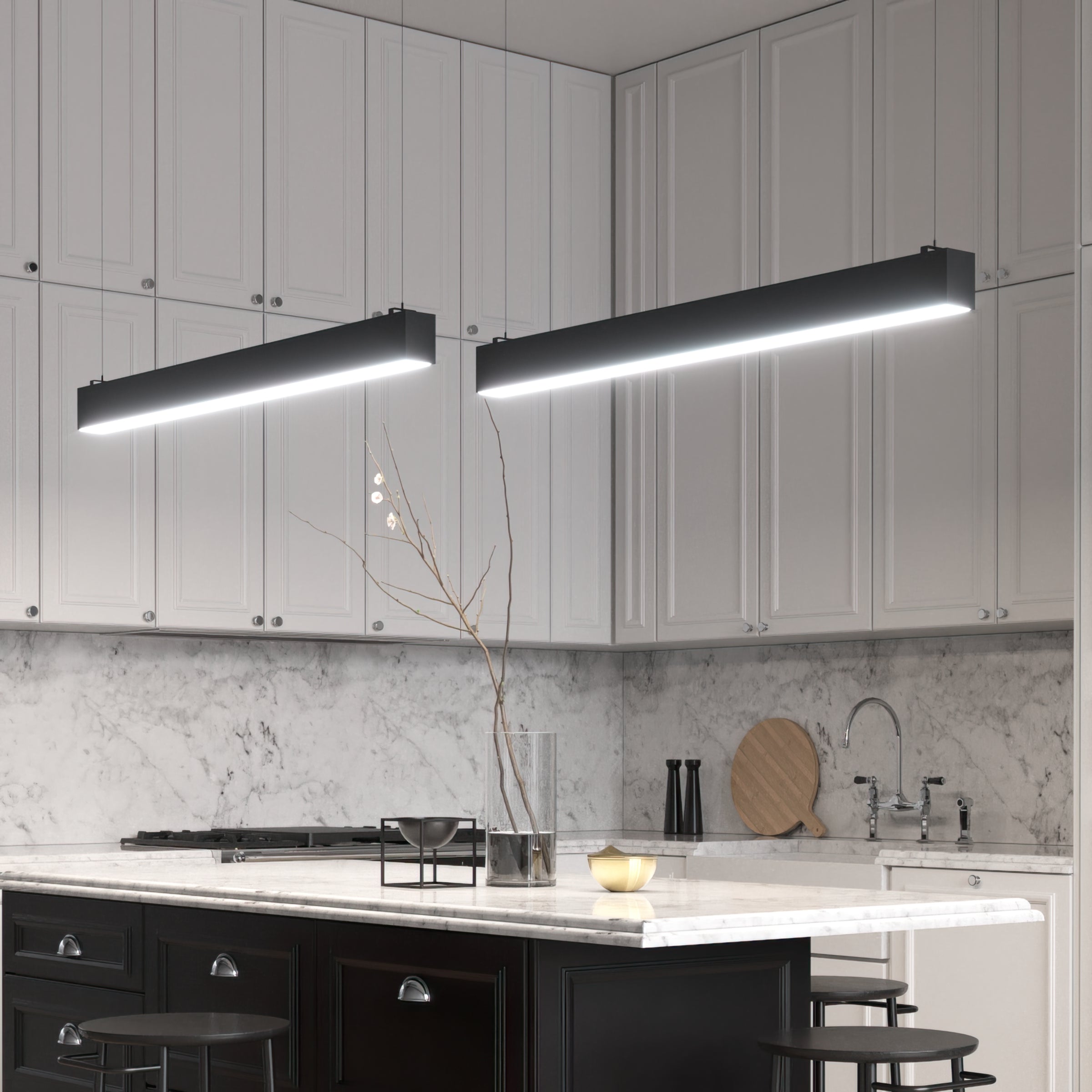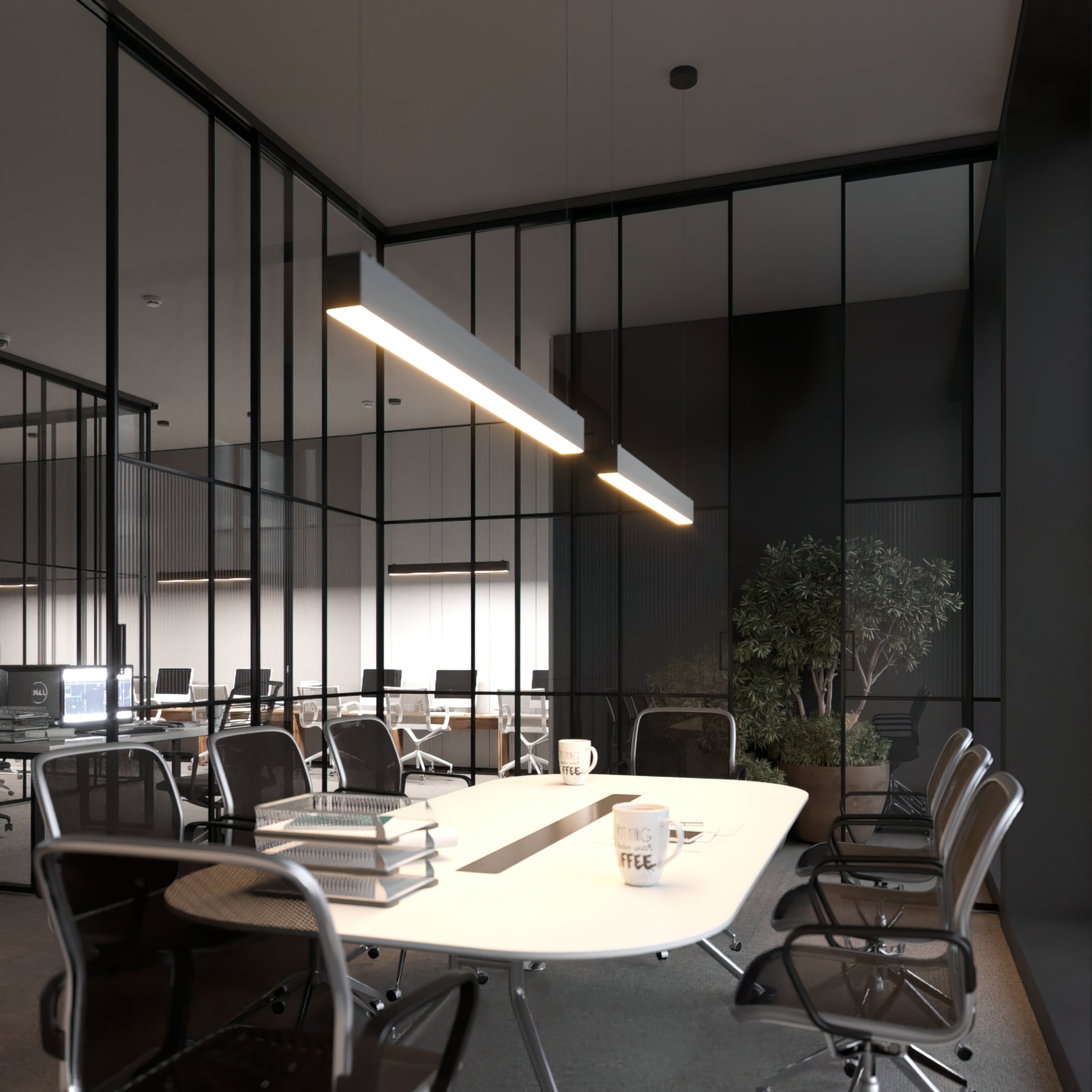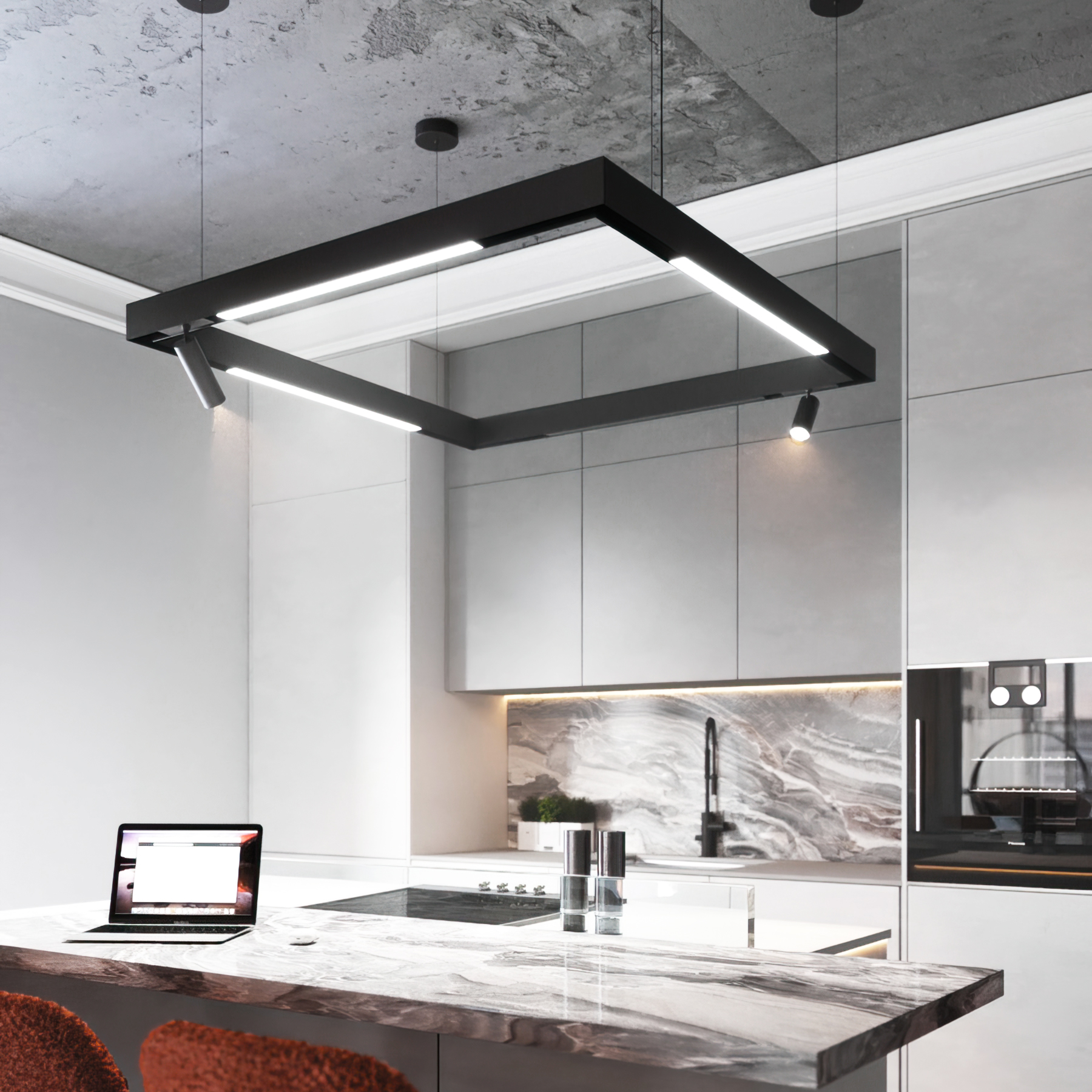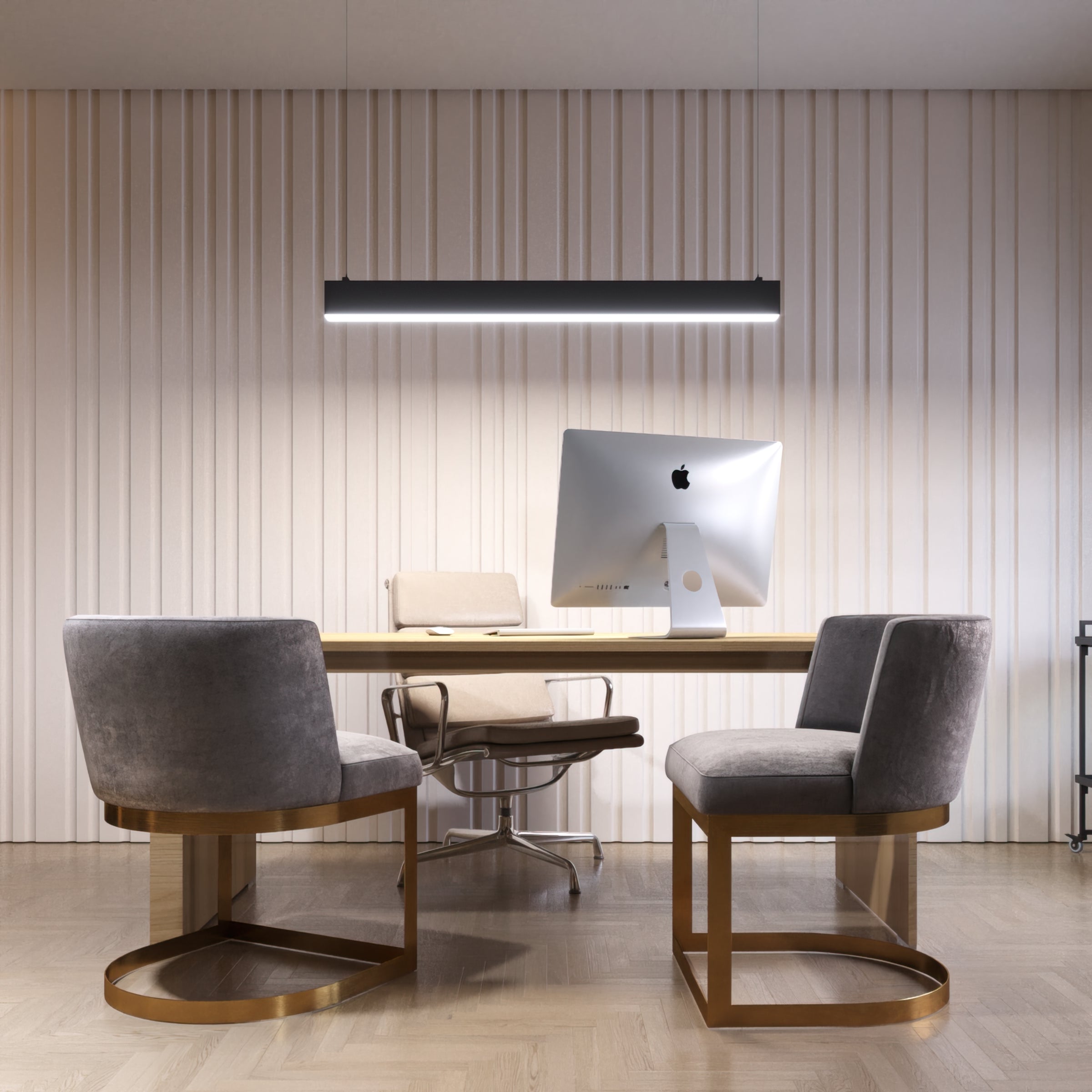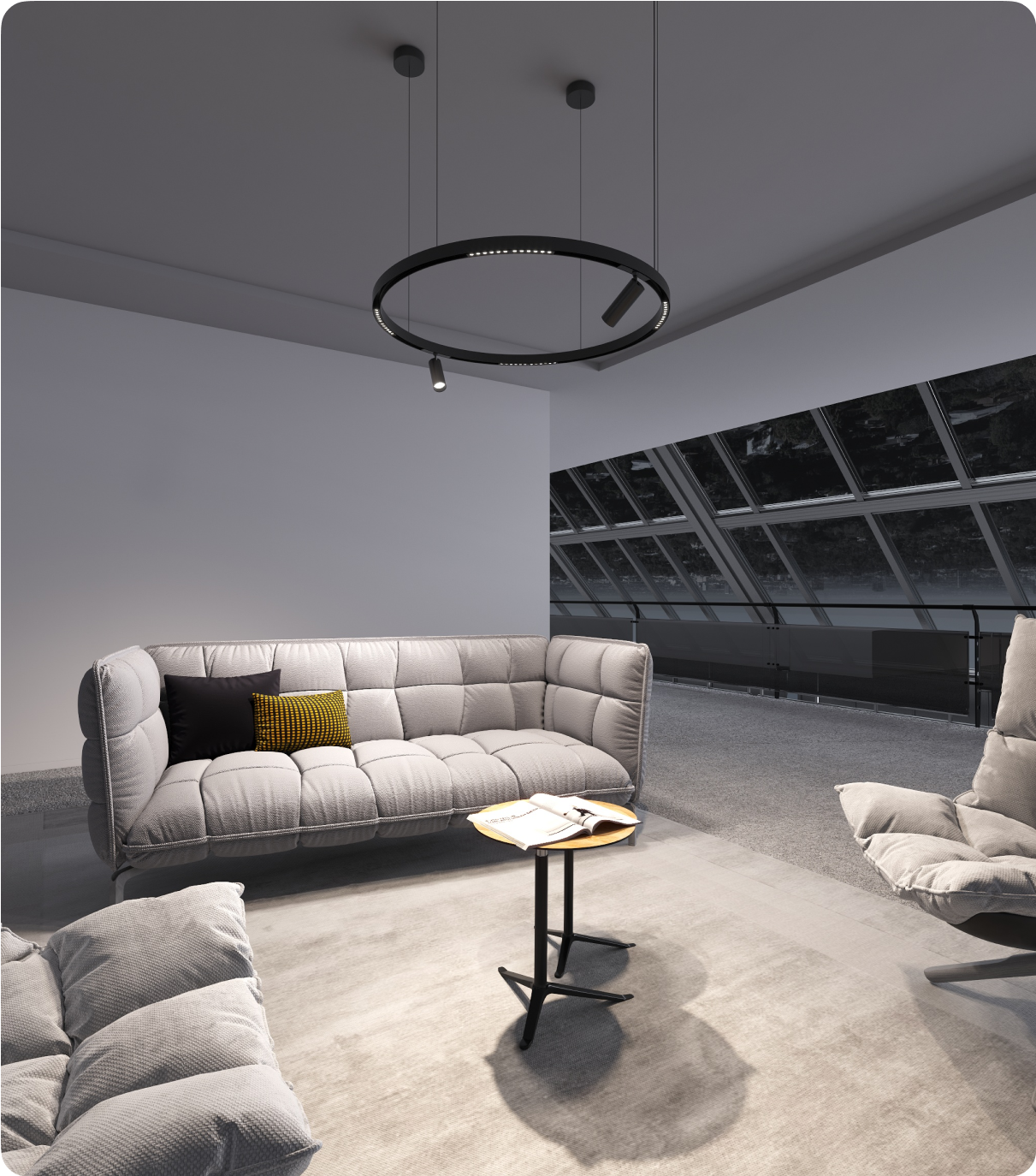Pendant lights are a type of light fixture growing in popularity today. Most people choose them over other types of lighting, indicating that they are trendy and also here to stay. In this guide, we will be covering everything you need to know about them by answering questions like what pendant lighting is, its advantages, and the types. We will also be looking at where to use pendant lights and tips for securely hanging pendants.
So what is pendant lighting? A pendant light is a fixture suspended from the ceiling by a cord, chain, or metal rod. It gets its name from the pendants that hang from a chain around the neck. The basic idea is that a pendant light is a single light bulb suspended in the air by a connector to the place we need, directing light onto an area and adding a decorative flair to the room.
Pendant lights are made from several materials, including glass, metal, plastic, and paper. Each of these materials creates a unique ambiance and effect. They come in different shapes and can be made using custom designs.
Pendant Light Advantages
Wondering why everyone is raving about pendant lights? Here are some reasons these fixtures have become the best friends of decorators and homeowners alike.

1. Easy to Install
Pendant lights are very easy to install, and you can even do it yourself. There’s no need to damage your ceiling as it requires minimal changes. Even if you choose to move elsewhere, you can remove it and take it.
2. Variety of Styles
Pendant lights are among the most versatile light fixtures. Not only do they come in different sizes, but there are countless styles for you to choose from. Whether you’re looking for modern fixtures, a farmhouse, or any other style, you can easily find one that matches your preference.
3. Concentrated Light
Pendant lights are major attractions because they strike more light into a specific place or area. Because of their dome shape, they can provide illumination where you need it the most. Plus, they can be hung at different heights, so you can always determine the amount of light you need.
4. Space-saver
Pendant lights provide focused illumination but not at the expense of your space. Unlike table lamps that can easily take a large chunk of your workspace, pendant lights will keep your work area uncluttered.
5. Decorative
Pendant lights are your best bet when you want a light fixture that does the dual job of distributing light and adding a special touch to any room. Installing pendant lights is a cost-friendly way to upgrade your space and create a room décor that’s yours.
Main Types of Pendant Lighting
Now that we have answered the question ‘what is pendant lighting?’ and its pendants, let’s move to the main types of pendant lighting.
1. Downlight Pendants
Downlight pendants direct light downwards. They are particularly suitable for concentrating light on an area, making them perfect for detailed work, including reading and cooking.

2. Uplight Pendants
Sometimes called inverted pendants, uplight pendants project light upwards toward the ceiling. They’re similar to a semi-flush mount light in that they provide light for general illumination without glares that cause discomfort but are different in that they hang down from the ceiling as opposed to being mounted on it.

3. Bi-directional Pendants
This type of light performs the dual function of projecting light upwards towards the ceiling and directing it downwards to a surface. They’re great for lighting up rooms with tall ceilings as they draw attention to the details above while directing light downwards.

4. Multi-light Pendants
As its name indicates, these pendants are composed of several lamp models packaged as one lighting unit. They are mostly used for creating an extra impact on a space as they both provide illumination and improve the room’s décor. If your space has only one overhead electrical opening, a multi-light pendant (also known as cluster pendants) can help provide plenty of light and emulate the look of a traditional chandelier.

5. Linear Pendants
Linear pendants are similar to multi-light pendants in that they consist of light-emitting objects assembled to create illumination. They’re usually long and horizontally shaped to distribute light broadly to a room.

6. Round Pendants
Round pendants are circular pendants used to take over a room. Most people use them as statement pieces because of their notable, transparent appearance and upscale design.

7. Track Pendants
Track pendants are pendant lighting hung on a track. They can be used for the creation of task lighting as well as for creating ambiance in a space.

Where to Use Pendant Lights
Pendant lights can be used in both residential and commercial spaces. They’re particularly great because they bring the light down from the ceiling so you can put it close to where you need plenty of illumination.
In your home, you can hang pendant lights in your bedroom for reading at night, your bathroom to eliminate shadows, and your dining table for ambiance. The applications are endless. Similarly, you can use pendant lights.
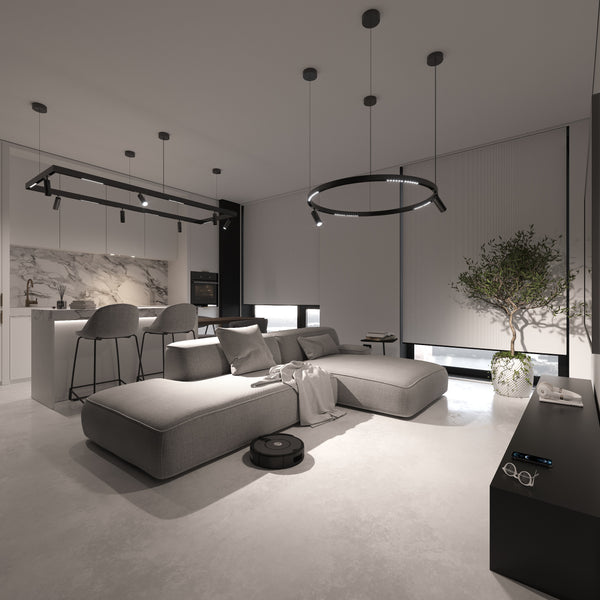
If you’re looking to use pendant lights in commercial spaces, you can install them to match a variety of applications. You can use them in galleries to draw attention to minute details of a piece, your work area for focused lighting, your entryway to create the right impression for your customers, and even the reception to brighten the reception area.

How you use pendant lights boils down to your understanding of the different types of lighting. All types of light can be grouped into four major categories. These include:
- General: General lighting is used to illuminate an entire room so you can see and walk safely. It serves the purpose of providing an even glow rather than for aesthetic purposes. Downward pendant lights are great for distributing general lighting across your office space.
- Ambient: Ambient lighting is used to illuminate a particular space equally. This type of lighting is soft and can be dimmed to accommodate other types of lighting. Its main purpose is to distribute light uniformly over an area, setting the tone for it. It doesn’t create unflattering shadows. Rounded and uplight pendant lights fit this purpose.
- Tasks: This type of lighting is targeted to a specific area of a room, especially areas where tasks will be performed. Because it is meant to help people achieve a goal or accomplish a task, it is without glare and doesn’t cause eyestrain. Linear and track pendants provide a lot of illumination for you to carry out tasks in the office.
- Accent: Accent lighting is used to highlight or focus on objects such as artworks, sculptures, plants, or bookcases. Because its goal is to draw attention to objects, accent light is more intense than other types of lighting. Most people pair accent lighting with ambient lighting. Bi-directional and multi-light pendants are suitable for this purpose.
Hanging Tips
Pendant lights make a fantastic addition to any space, but hanging them comes with a problem. The key to hanging your pendants without hassles is buying the right pendants. To do that, you will need to ask three questions.
How Many Pendants?
It’s recommended to buy an odd number of pendant lights as they look better than an even number. Strategically positioned in any space, they are sure to improve its aesthetics.
How Big?
The size of your room or the prominent piece of furniture you want to highlight is vital. Scale the shade to the size of the room or area you want to direct light to so you can create a visual buffer around it.
How Bright?
If you use ambient lighting for a room, you should plan 2 watts per square foot. In other words, it will take around 200 watts to cover a 10-by-10-foot room. If the room is painted in saturated colors, increase the wattage by up to 50 percent. Your goal should be to aim for 115 watts per square foot for task lighting.

If you have answered the questions above and purchased the pendants, it’s time to hang them. Here are some rules for hanging them in different spaces:
- Bathrooms: Hang the pendant 18 inches from the sink to avoid shadows around your face. Be sure to mount it near your eye level.
- Kitchen island: It depends on the number of pendants you want to use. For one pendant, 30-36 inches above the counter will do just fine. If your island is large, consider installing multiple lights at about 18 inches in from the ends to allow for head clearance. You also want to space them so they can cover every area evenly.
- Dining table: For a cohesive effect, the size of the table should determine the height. Most people prefer 33-36 inches from the top. The idea is to hang it higher if the table is large and lower if it’s smaller.
- Bedside: If you are going to be using the pendant for reading, it should be at least 50 inches from the floor.
- Entryway: If yours is a tall ceiling, the pendant should hang at a midpoint between the floor and the ceiling. But for the regular 8-foot high ceilings, mount it 6 inches from the ceiling and at least 7 feet above the floor.
- Kitchen office: If you have a kitchen desk, mount the pendant around 30 inches from the counter otherwise, leave 36 inches for standup stations.
Difference between Pendant Lighting and Chandeliers
Most people think pendant lighting and chandeliers are the same, but they’re not. The major difference between a pendant light and a chandelier is that the former has a single light bulb incorporated into the fixture. At the same time, the latter hangs with multiple branches that hold multiple bulbs.
Another notable difference is that a chain suspends a chandelier to support the different branches, but a pendant light hangs a rope or metal rod. Also, chandeliers feature a sophisticated design, while pendant lights have a minimalist look.
